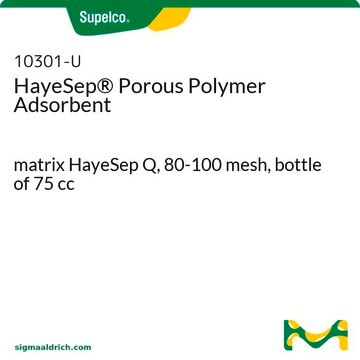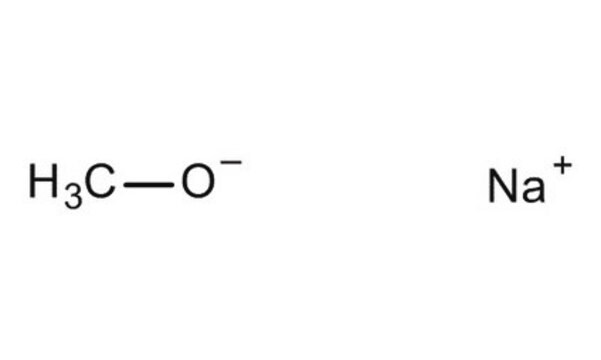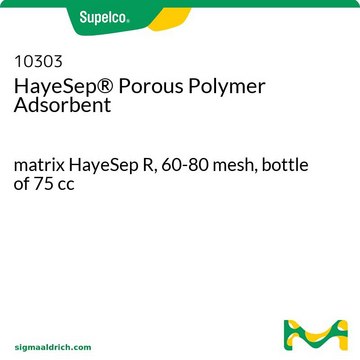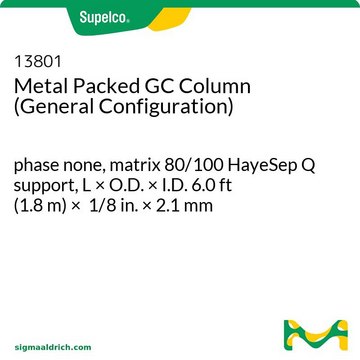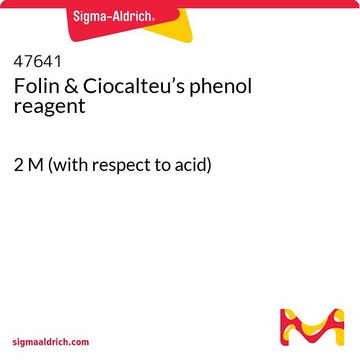10306
HayeSep® Porous Polymer Adsorbent
matrix HayeSep S, 60-80 mesh, bottle of 75 cc
About This Item
Empfohlene Produkte
Form
solid
Verpackung
bottle of 75 cc
Hersteller/Markenname
Hayes Separation Inc
Parameter
250 °C temp. limit
Methode(n)
gas chromatography (GC): suitable
Oberflächenbereich
~583 m2/g
Matrix
HayeSep S
Partikelgröße
60-80 mesh
Dichte
~0.33 g/mL (free fall density)
Suchen Sie nach ähnlichen Produkten? Aufrufen Leitfaden zum Produktvergleich
Allgemeine Beschreibung
For more information about any of our adsorbents, please visit sigma-aldrich.com/adsorbents
Anwendung
Rechtliche Hinweise
Lagerklassenschlüssel
11 - Combustible Solids
WGK
WGK 3
Flammpunkt (°F)
Not applicable
Flammpunkt (°C)
Not applicable
Persönliche Schutzausrüstung
Eyeshields, Gloves, type N95 (US)
Hier finden Sie alle aktuellen Versionen:
Analysenzertifikate (COA)
Leider sind derzeit keine COAs für dieses Produkt online verfügbar.
Wenn Sie Hilfe benötigen, wenden Sie sich bitte an Kundensupport
Besitzen Sie dieses Produkt bereits?
In der Dokumentenbibliothek finden Sie die Dokumentation zu den Produkten, die Sie kürzlich erworben haben.
Unser Team von Wissenschaftlern verfügt über Erfahrung in allen Forschungsbereichen einschließlich Life Science, Materialwissenschaften, chemischer Synthese, Chromatographie, Analytik und vielen mehr..
Setzen Sie sich mit dem technischen Dienst in Verbindung.